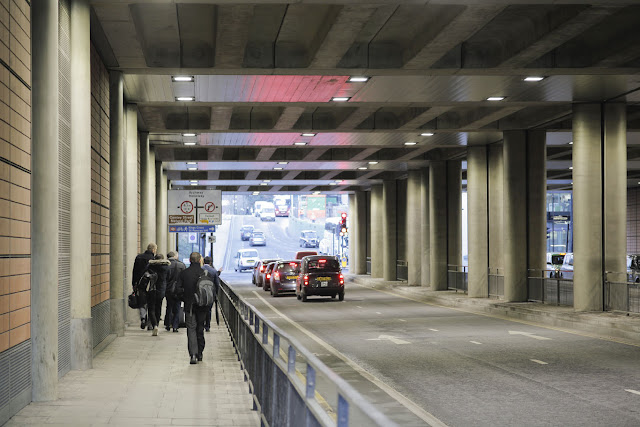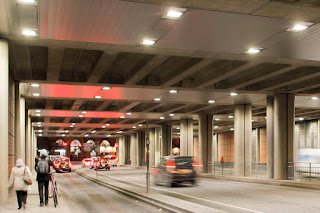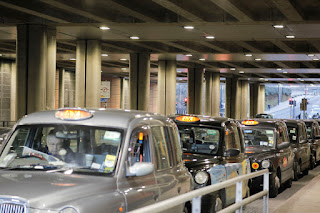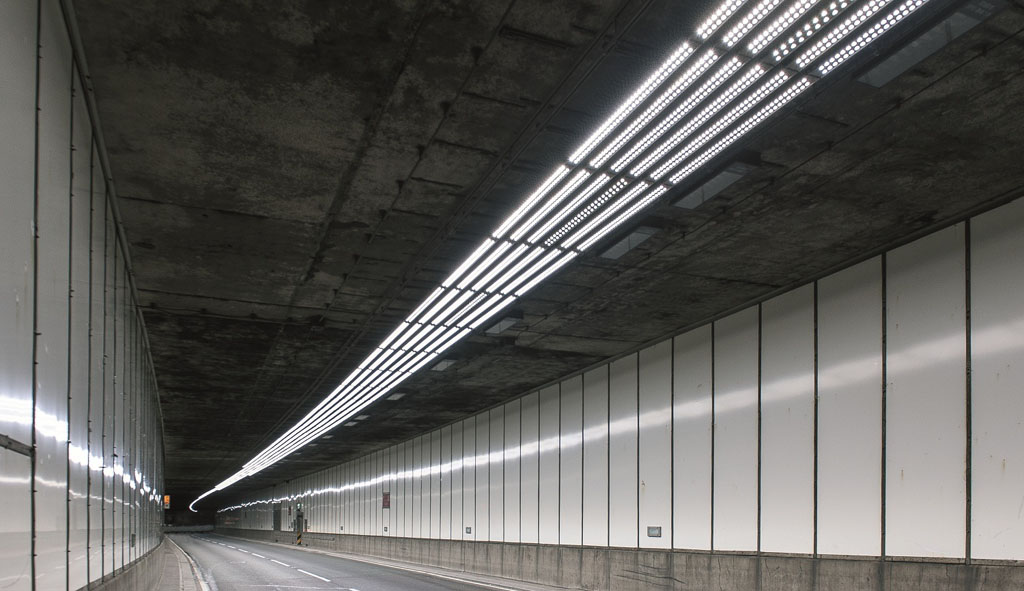Archive for August 2015
Lux Reports: The latest report from UK shopping centres body BCSC and property advisor CBRE has added weight to the argument that LED lighting has become crucial to energy efficiency improvements and the valuation of malls.
Making malls energy efficient adds five per cent to their value“British Council of Shopping Centres
The report on the environment and rationale for sustainability has taken a deliberately financial stance on enhancing the value of shopping centres and estimated that making malls energy efficient adds five per cent to their value.
BCSC president and chief executive of UK property investor Hammerson, David Atkins, said: ‘In the past reports have tended to be either very theoretical or very technical. This is one of the first attempts to present the arguments in a straightforward and logical way to those who may be making or advising on sustainability strategies and to put numbers on the topic.’
He added: ‘There is no doubt that the potential upside of investment per pound is highest among those schemes which may have adopted more of a “sticking plaster” approach to maintenance and replacing equipment in the past.’
Rebecca Pearce, EMEA head of sustainability at CBRE, who authored the report, said it is an attempt to persuade sceptics and, analysing 35 centres across the spectrum of malls, the report has sought to provide evidence that it is something any landlord can achieve.
The single most positive thing that could be done to improve energy efficiency in shopping centres is undoubtedly the installation of LED lighting”Heino Vink, Multi Corporation
‘The crux of the report is to show that sustainability is worth investing in,’ she said. ‘The most obvious is replacing existing lighting with LED lighting and really we are beyond the time to justify this and to the point of saying ‘just get on and do this guys’.’
Heino Vink, COO of Dutch-based shopping centre giant Multi Corporation, has also backed LED lighting replacement and, speaking at an International Council of Shopping Centres event in London last month, said: ‘Looking at the single most positive thing that could be done to improve energy efficiency in shopping centres, it is undoubtedly the installation of LED lighting.’
Davinder Jhamat, head of research and education at BCSC, said that the breadth of shopping centres reviewed showed that the biggest gains may be in those older, secondary schemes which lacked investment during the austerity years. ‘The case for LED lighting is very well proven. How difficult is it, after all, to change a light bulb? We’re not talking about the lifts or major HVAC changes. But this is also not just about the corporate level, it needs to be embedded.’
Contact Novel Energy Lighting today to discuss your retail premises lighting retrofit. Tel: 0208-540-8287,sales@novelenergylighting.com
energy efficient lighting · led lighting · mall lighting · Novel Energy Lighting · retail led · retail lighting · shopping mall led · shopping mall lighting
19
LEDs cut costs in North London underpass
Comments off · Posted by admin in LED, LED downlights, LED Floodlights, Philips LED

This underpass near King’s Cross and St Pancras stations in North London is saving money on energy and maintenance since it had its old metal halide lights replaced with specially designed LED road tunnel luminaires from Philips.
The St Pancras Road underpass is a busy road, cycle and pedestrian route to the two major train stations, as well as providing access to Camden Council’s new offices. It was previously lit by around 100 twin-lamp metal halide fittings and the council saw an opportunity to visually improve what had become a gloomy and uninviting area. This was a ‘spend to save’ initiative to take advantage of energy-efficiency gains and lower maintenance costs while also reducing carbon emissions.
The lighting design was carried out by Philips and the new luminaires were installed by main contractor SPIE. SPIE’s John Broster said: ‘The previous luminaires were fitted into the soffit of the underpass and as this is a concrete strutted roof it would have been impractical to alter it. We needed a solution that could provide a direct replacement for the existing fittings.’
The stainless steel luminaires have been installed on a one-for-one replacement basis, to provide energy savings of more than 50 per cent. The new lighting has increased light levels and uniformity to remove the gloom, while the 4000K neutral white colour temperature has created a better and more inviting visual environment for users of the underpass. The tunnel feels safer and more pleasant.
The project also provided an ideal opportunity to make better use of lighting control. ‘As this is a short underpass the lighting only requires one-step dimming and we were able to adjust the existing system, using high light levels during the day and dimming at night to minimise the contrast for drivers entering the underpass,’ said Broster.
The council has achieved a significant reduction in energy consumption, while also reducing maintenance costs as the luminaires are expected to be virtually maintenance-free throughout their lifetime, and should pay for themselves in about five years.
Contact Novel Energy Lighting to discuss your LED lighting retrofit requirements. We work hand in hand with the major lighting manufacturers like Philips to specify, supply, and install projects. Tel: 0208-540-8287. Email: sales@novelenergylighting.com
led floods · LED lamps · led lighting · LED luminaires · led tunnel lighting · lux · Novel Energy Lighting · philips led · street lighting · tunnel lighting · urban lighting
REVIEWED LED GU10 lamps
Lux Reports: Nowadays, it’s nigh-on impossible to buy a luminaire from the DIY sheds or a high-street retailer which doesn’t have a GU10 cap. 12v lamps seem to have had their day as far as the mass retailers are concerned.
It isn’t difficult to match the light output of a 20W or 35W halogen GU10, so we have only tested LED lamps that claim equivalence to a 50W.
The European DIM2 regulation says that to make this claim, the LED GU10 lamp must emit more than 345 lm in a 90-degree cone. The total lumen output, including light that falls outside this cone, may be considerably higher. Some of the lamps tested emit over 500 lm so they would clearly be seen as an improvement if you retrofitted them in an existing installation of halogen GU10 (with the same beam width).
Our understanding is that all products currently on the market must conform to DIM2. But we regularly hear of lamps that don’t”
We’ve asked several experts, and our understanding is that all products currently on the market must conform to DIM2. But we regularly hear of lamps that don’t.
The problem for Joe Public is that some lamps don’t state on the box whether the lumen output quoted is the total emitted or within the 90-degree cone. Some quote both figures. Reputable manufacturers use phrases like ‘usable lumens’ or ’90-degree cone’ so you know what you are buying. However, until all suppliers mark their packaging clearly, it is impossible for the purchaser to make fair comparisons between the different products. No wonder people buy the cheapest or the one quoting the biggest lumen value.
The situation is made worse because there is no effective policing of the market. This, in effect, benefits the poor quality, low-cost suppliers to the detriment of the manufacturers of good-quality lamps.
One last point to make is that a 90-degree cone isn’t really what you would call a spotlight. For the non-trigonometrists amongst you, that’s a two-metre wide illuminated patch from a lamp one metre away.
If you are as confused as I am by all the test standards that cover LEDs, there is a useful summary on the LIA website. Look for Technical Statement TS01. It’s nine pages long and covers existing and proposed European and US regulations and guidance.
None of the 11 lamps we’ve tested here had a particularly high power factor. The best was Osram at 0.88 and the poorest were the Aurora and Bell at 0.52. Why does this matter? Because it means that you are drawing more current than might be apparent from just looking at the wattage. An electrician complained to me about this because he had to resize all his fuses in a (large) domestic house purely because of equipment with a poor power factor.
Before you buy the lamps, you should check what the beam looks like. Some have coloured edges or don’t have a smooth gradation of light from the centre to the edge. The three on the left of the main photo for this article are all rated at 2700K and the one on the right is rated at 3000K.
Summary of results
We were pleased to see that, generally, the performance was as claimed. We measured the total light output.
Note that we tested just one lamp from each supplier. There are always tolerances in manufacturing and so the lamp you buy may not perform exactly as the one we tested. However, these lamps are made by the million; it would be surprising if they varied that much.
Our testing was done at the independent LIA Laboratories in Telford.
Thanks to LIA Labs for their help!
Aurora Enlite 3000K, 5W
The Enlite is a brand new range of lamps. What really sets it apart from the other lamps we tested is the efficacy of 96 lm/W – almost 500 lm from 5W. It also has a 60-degree beam, wider than the others tested, which makes it much more useful for lighting areas where you want a general spread of light.
- Output 493 lm
- Power 5.1W
- Efficacy 96 lm/W
- CCT 2979K
- CRI 82
- Power factor 0.52
- Overall ****
British Electric Lamps 3000K, 6W
Bell slightly undersells itself inasmuch as the packaging indicates 6W consumption whereas we measured 4.65W. However, the power factor was 0.52 and the measured lumen output 358 lm, just above the minimum 345 lm allowed by DIM2.
Ra is 82 per cent.
- Output 358 lm
- Power 4.7W
- Efficacy 76 lm/W
- CCT 3073K
- CRI 82
- Power factor 0.52
- Overall ***
Integral LED 2700K, 7.5W
Integral’s 7.5W lamp performed almost exactly as claimed on the box. 7.4W versus 7.5W claimed and 499 lm instead of 500. That’s what you call tight manufacturing tolerances. The CRI was 80 and the measured power factor was 0.76, better than most. The packaging quotes both total lumens and those in a 90-degree beam.
- Output 499 lm
- Power 7.4W
- Efficacy 67 lm/W
- CCT 2633K
- CRI 80
- Power factor 0.76
- Overall ****

Kosnic LED
- Output 505 lm
- Power 5.6W
- Efficacy 90 lm/W
- CCT 2723K
- CRI 83
- Power factor 0.53
- Overall **** A nice little lamp

Megaman 2800K, 7W
This particular 7W lamp consumed eight per cent more power and emitted nine per cent less light than the claims on the box indicated. The CRI was a whisker over 80. The CCT was pretty much as claimed at 2879K compared with a quoted 2800K. The power factor was a respectable 0.67.
- Output 500 lm
- Power 7.6W
- Efficacy 66 lm/W
- CCT 2879K
- CRI 82
- Power factor 0.67
- Overall ***
Osram Parathom 2700K, 5.3W
As you would expect from Osram, this lamp performed almost exactly as stated on the box – 5.15W, 2688K, 355 lm against a stated 350 lm. The power factor at 0.88, was the highest we tested, so the electricians won’t have to worry about fuse sizes. In a way, Osram undersell themselves because they don’t quote total lumens on the box. A non-specialist – i.e. 99 per cent of purchasers – might think it doesn’t perform so well as the cheaper competition.
- Output 355 lm
- Power 5.2W
- Efficacy 68 lm/W
- CCT 2688K
- CRI 81
- Power factor 0.88
- Overall ****
Philips MasterLED Spot 4000K, 5.5W
We tested the Master LEDspot MV, which is nominally a 5.5W unit. The measured wattage on the samples was 5.4W with a PF of 0.66. This lamp performed slightly better than the claims on the packaging, with a lumen output that was 8 per cent higher. It also had an Ra of 86; which is more than most products of this type.
- Output 417 lm
- Power 5.4W
- Efficacy 77 lm/W
- CCT 3890K
- CRI 86
- Power factor 0.66
- Overall ****
Soraa Brilliant 3000K, 7.5W
Although this lamp had the highest wattage, it also had almost the highest lumen output and CRI. We tested the 10-degree narrow spot and this produces a good, clean beam with a clearly defined centre. This lamp is one of the Brilliant series, with a CRI of 80+ (Soraa is better known for its Vivid range, with CRIs above 95). There is also a useful range of clip-on lenses and accessories which can change the beam width or colour temperature.
- Output 503 lm
- Power 7.7W
- Efficacy 66 lm/W
- CCT 2834K
- CRI 85
- Power factor 0.78
- Overall ****

Sylvania 5W RefLED ES50
This is a really good lamp. As you would expect, all the information is on the box. The power factor is much better than claimed and was the second highest we tested. The total measured output was 413 lm and this bumps its efficacy to third best. However, forget about the figures, what sets this lamp apart, both on and off, is its appearance. A lot of effort has gone to making it look as much as possible like a conventional halogen lamp. The front face really sparkles when you switch it on. If you care about lighting, this is the lamp for you.
- Output 413 lm
- Power 5.2W
- Efficacy 79 lm/W
- CCT 2768K
- CRI 82
- Power factor 0.83
- Overall ***** BEST OVERALL: Good quality and great looking
Verbatim 2700K, 6W
The packaging says it is equivalent to a 57W lamp, but certainly the 465 lm output (in a 90-degree cone) means it easily betters a 50W halogen GU10. You can see from the table that the efficacy is one of the best we tested. Cooler lamps would be even more efficient than the 2700K version we tested.
- Output 465 lm
- Power 5.6W
- Efficacy 83 lm/W
- CCT 2697K
- CRI 82
- Power factor 0.66
- Overall ****
V-Tac COB Spotlight
Although described as a spotlight, the beam is 110 degrees which could be misleading to the non-specialist – it would light from floor to ceiling if it was 1.5m away. The package claims equivalence to a 50W GU10 but the 90-degree beam lumen figure isn’t on the box, so there is no way of knowing. We measured 423 lm and 5.4W rather than the 450 lm and 6W claimed.
- Output 423 lm
- Power 5.4W
- Efficacy 78 lm/W
- CCT 2838K
- CRI 81
- Power factor 0.55
- Overall ** Data could be clearer
Novel Energy Lighting sells a range of LED GU10 brands. Please visit us today to explore the options available, or email: sales@novelenergylighting.com for volume discounts
gu10 · LED downlights · led GU10 · led gu10 50W · LED lamps · led lighting · led spot · lux · Novel Energy Lighting
18
Osram safeguards LED road luminaires with high overvoltage protection
Comments off · Posted by admin in LED
The power consumption benefits from LED street lighting could be compromised by the threat of voltage peaks from lightning strikes.

Lightning density in Europe differs significantly from region to region. Mandatory image source specification: © British Crown copyright 2015, the Met Office
Cities like Milan and Turin are expecting at least 50 percent less electricity consumption thanks to recent transformations to LED and Optotronic control devices from Osram. However, lightning strikes can risk the economic advantages as LED modules run with lower voltage levels and could be damaged from overvoltage. This danger has increased with the UN Climate Council identifying increasing levels of lightning worldwide in its fifth assessment report (IPCC14). Around 10 percent of the several million lightning strikes occurring each day impact on the ground, thereby causing voltage peaks. To effectively protect LED modules assembled in road luminaires, the Osram Optotronic 4DIM features overvoltage protection of 8 kilovolts as standard.
Levels of lightning density in Europe are high in summer, particularly in July and August, and with large regional differences – the U.K. Meteorological Office recorded between just 0.25 and over 20 strikes per square kilometre in 2014. In general it can also be said about distribution across Europe that lightning in the South East occurs more frequently than in the North or North West, and in towns and cities more than in rural areas
As a consequence, the new generation of Osram “Optotronic 4DIM” electronic control units feature protection of up to 8 kilovolts between mains supply and ground in protection classes I and II. This means that lightning can strike an area of up to 200 metres from a luminaire mast without the LED module being damaged.
Compared to the common 4 kilovolt overvoltage protection with control units of other manufacturers, this means that with an example mast spacing of 30 metres, twice the quantity of road luminaires survive lightning impacts without damage. In many European regions the high level of overvoltage protection with Optotronic 4DIM units is usually sufficient to provide long term protection. However in regions with high lightning density levels though, it is recommended as a precaution to implement supplementary protective measures, for example in the main distribution frames and junction boxes of road lighting systems.
Osram as the first manufacturer made this 8 kilovolt protection possible with a so-called EQUI connection (equipotential) for protection class II applications, enabling various components of the lighting system to exhibit the same electric potential, thus significantly reducing the occurrence of overvoltage on the LED module.
Optotronic control units also reliably protected from voltage peaks from two other hazardous sources: – those with up to 6 kilovolts due to load changes or switching commands in the power supply grid (often generated several dozens of times per year), and from electrostatic discharge (ESD) occurring with for example maintenance work, if no ESD protective measures exist.
Overvoltage though does not automatically mean the immediate failure of an LED module, but can cause premature ageing and therefore shorter operating periods; this has consequences for the operator in terms of costs. Normally, LED solutions have low failure rates and achieve up to 100,000 operating hours.
Novel Energy Lighting supplies all Osram LED products. Talk to us today about your requirements for LED lighting, and LED street lighting. Tel: 0208-540-8287, Email: sales@novelenergylighting.com
led lamp · led lighting · led street light · led streetlights · Novel Energy Lighting · osram · osram led · osram street lighting · street lighting
12
Light at the end of the tunnel (and slightly dimmer light in the middle)
Comments off · Posted by admin in LED, Philips LED
Until recently, this tunnel in Stoke-on-Trent, England, had to be regularly closed to change failed lamps, causing disruption to drivers.
I have reduced my overall maintenance costs, saved a substantial amount of money in energy costs, reduced the carbon footprint and reduced the risks for the operatives’Paul Diamond, Amey
amey · energy efficiency · energy saving lighting · highway lighting · led lighting · Novel Energy Lighting · philips led · philips linear led · street lighting · tunnel lighting
4
Plumbing firm eyes huge annual savings with LEDs in national distribution warehouse
Comments off · Posted by admin in LED, LED Floodlights
Turning on the taps: Plumbing company Wolseley UK has tapped a government funding scheme to install new LED warehouse lighting in hopes of cutting electricity costs by £100,000 per year.
Lux reports: A nationwide UK plumbing firm is upgrading the lighting at its central distribution warehouse in a move to save £100,000 ($157,000) a year in electricity costs.
Wolseley UK is replacing nearly 4,400 light fittings with LEDs at its Leamington Spa facility and hopes to complete the job by the end of September, the company said.
The move to low-energy lighting will cut electricity consumption by around 236,000 kilowatt-hours during late afternoon and evening hours from November through February, and the total will equate to about 300 homes, Wolseley estimated.
It expects the savings will pay back total costs of around £500,000 ($786,000) in less than five years.
The company is financing the upfront costs in part with a £50,000 ($79,000) grant from the Department of Energy and Climate Change’s Electricity Demand Reduction (EDR) programme.
DECC announced £20 million ($31 million) of available funds last year and awarded a first tranche earlier this year.
It is expected to announced a second tranche this month.
BusinessGreen has criticised the programme for not living up to its promise, as it allocated only £1.28 million ($2 million) of an available £10 million ($16 million) in the first round.
In addition to Wolseley, EDR recipients inlcuded Network Rail, BAE Systems, Tata Steel and others.
Wolseley UK operates a number of heating and plumbing operations including the retail chain Plumb Center. It is part of the £13 billion Theale, England-based international plumbing and heating giant Wolseley plc.
Novel Energy Lighting supplies a range of LED high bays, LED floods, LED corns, and other low energy lighting for warehouse applications. Call us today to discuss your needs: Tel: 0208-540-8287
—
Photo of a Wolseley warehouse is from Wolseley.
led corn · led flood lights · led hibay · led high bay · led lighting · low energy lighting · Novel Energy Lighting · warehouse lighting · wolesley uk

















